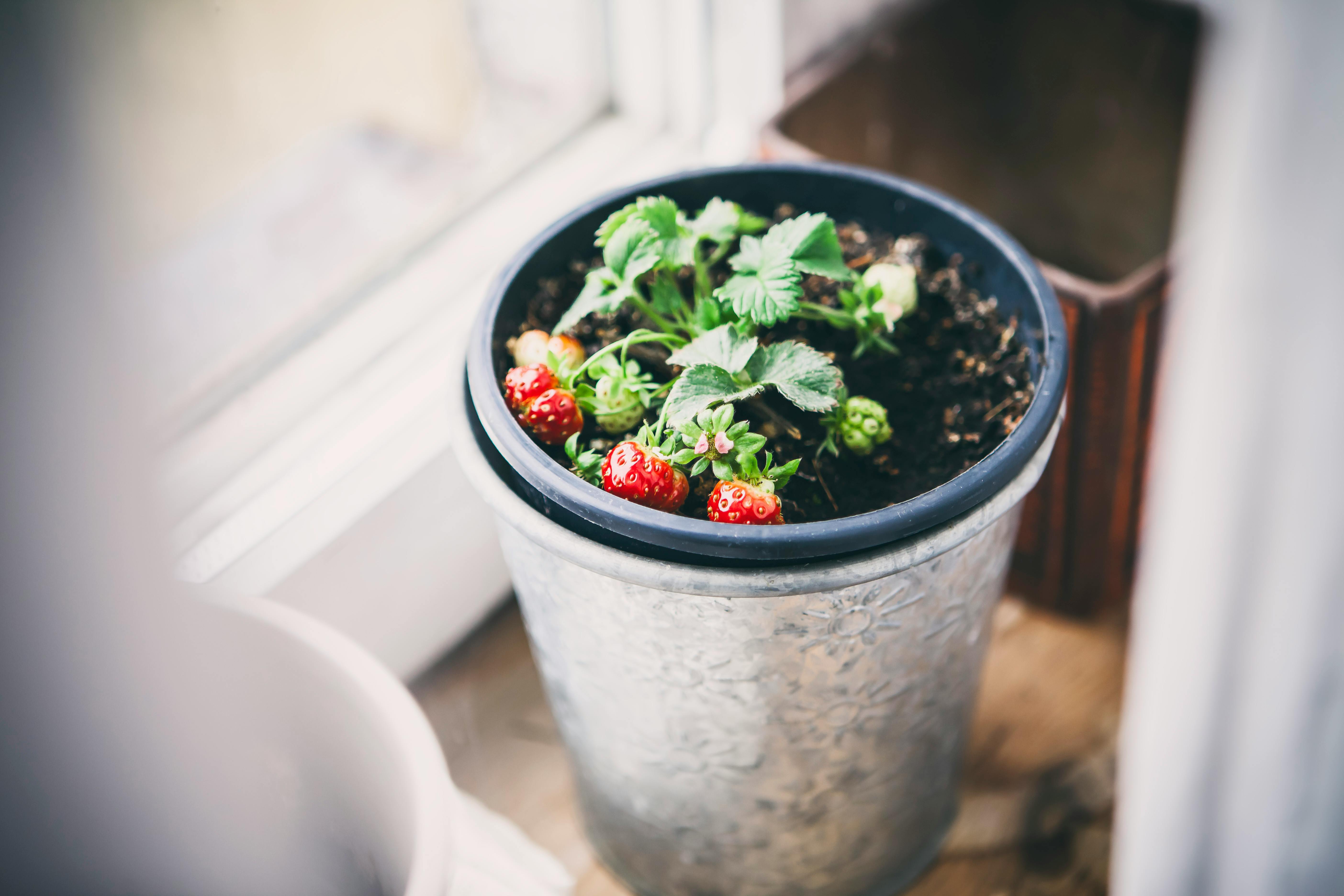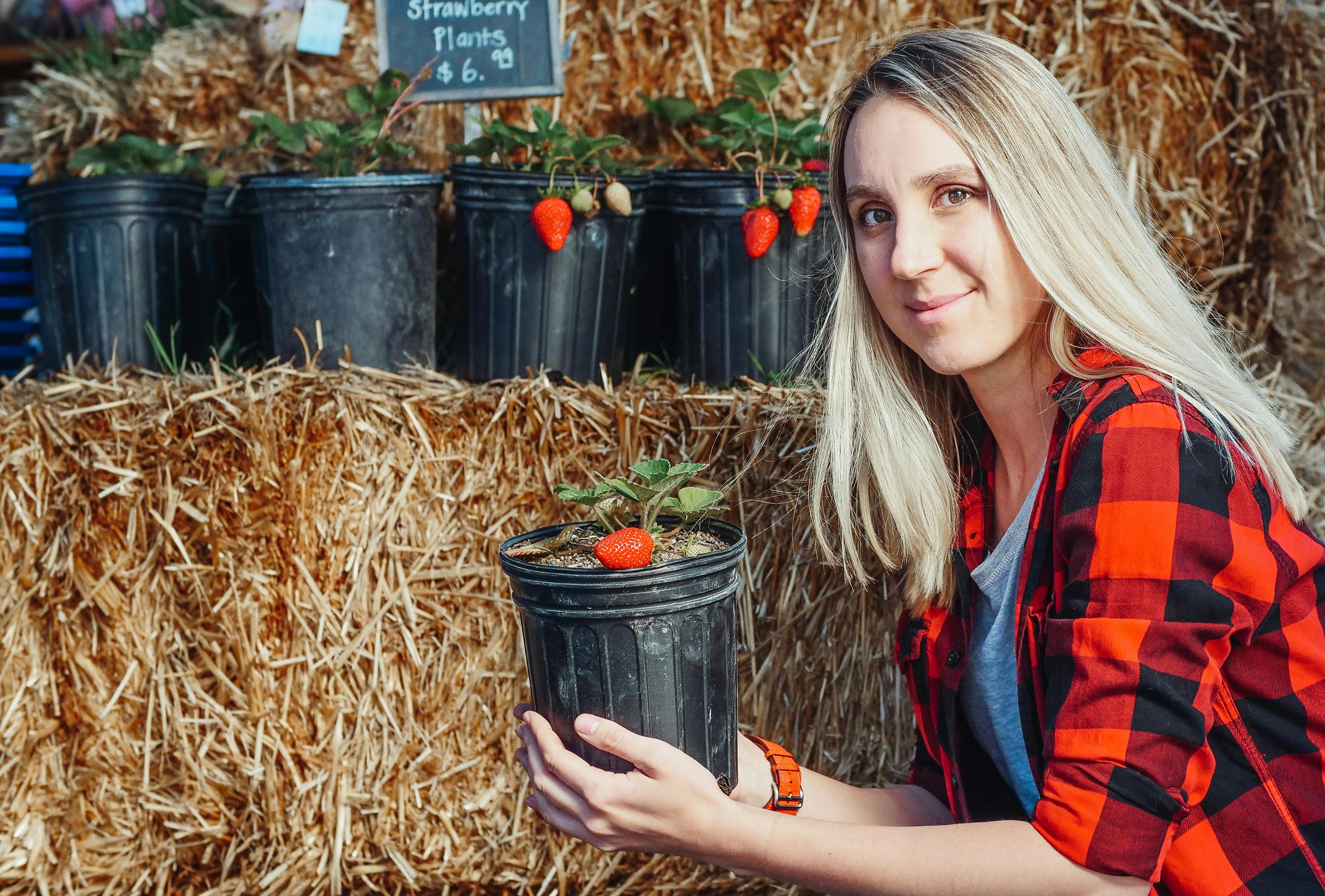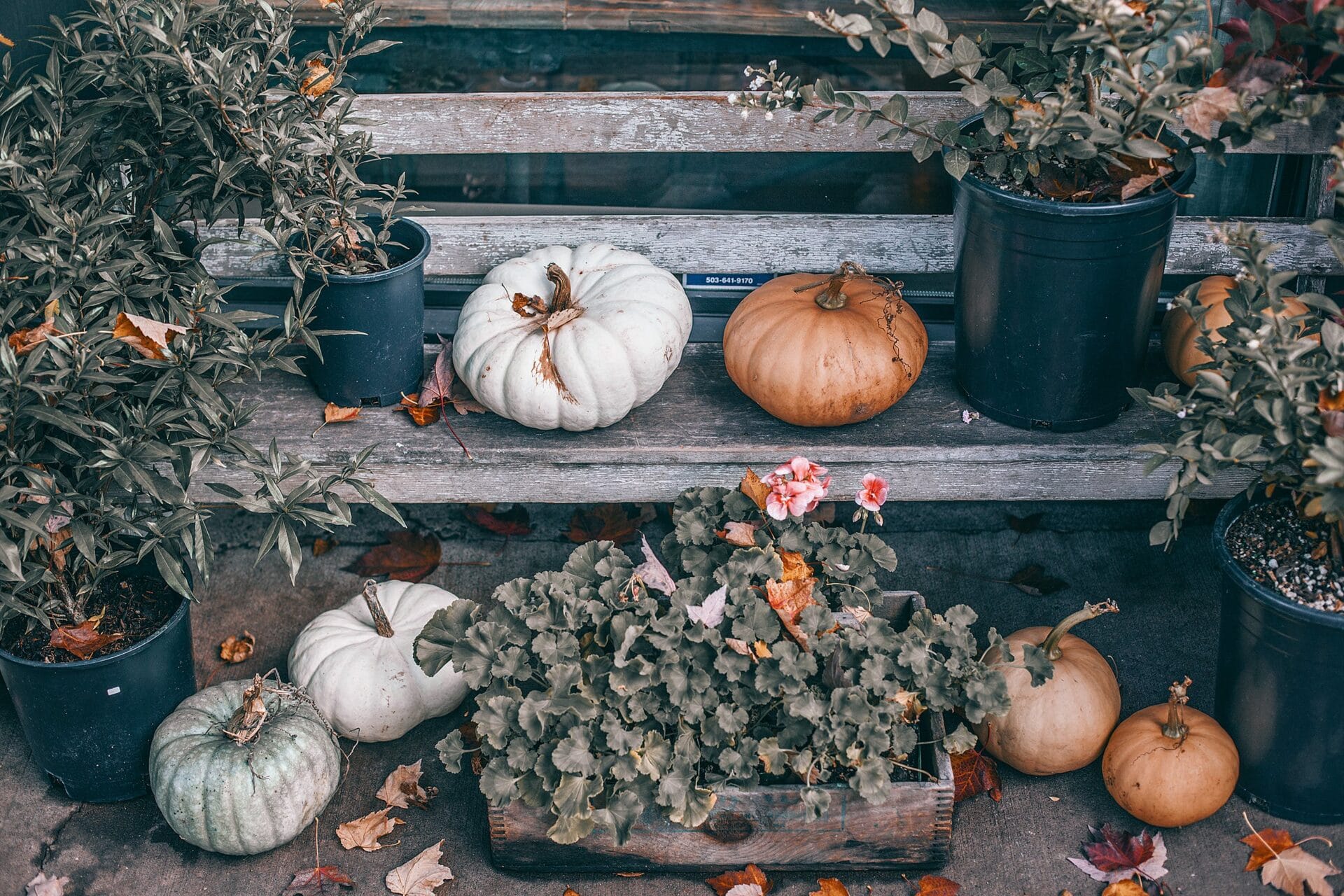Growing strawberries at home can be both rewarding and enjoyable. Knowing what size pot to grow your strawberries in is essential to ensuring the best possible growth and yield from your crop. The size of the pot you choose will depend on a variety of factors, such as the type of strawberry plants you are growing and space available. In this article, we will discuss the different factors to consider when determining what size pot is best for growing strawberries in.When choosing a pot size for growing strawberries, it is important to consider the type of strawberry you are planting, the size of the plant at maturity, and the amount of soil needed for adequate drainage. Generally, a minimum pot size of 12 inches wide and 10 inches deep is recommended for strawberry plants. However, if you are planting a larger variety of strawberry, it may be necessary to choose a larger pot. For example, June-bearing strawberries should be planted in pots that are at least 15 inches wide and 12 inches deep. Additionally, when selecting your pot size it is important to make sure there is enough space in between each plant for proper air circulation. Finally, always make sure your pots have adequate drainage holes in the bottom to prevent root rot and waterlogging.
What Size Pot is Best for Strawberries?
When it comes to growing strawberries in pots, the size of the pot you choose can be just as important as the variety. Generally, a larger pot is better than a smaller one, for several reasons. Firstly, a larger pot allows for more soil, which means that your strawberry plants will have more room to grow and spread their roots. Secondly, larger pots retain moisture better than smaller ones, which helps to keep your strawberries well-hydrated during hot summer days. Lastly, larger pots help to keep your strawberry plants from becoming root-bound, which can cause them to become stunted or produce fewer fruits.
When choosing a pot size for your strawberries, aim for one that is at least 12″ in diameter and 8″ deep. This size should be large enough to accommodate several plants without becoming overcrowded. If you’re planning on growing several varieties of strawberries in one container, then you’ll need a larger pot—at least 18″ in diameter and 10″ deep—to ensure that each plant has enough space to spread its roots and thrive.
No matter what size pot you choose for your strawberries, make sure that it has adequate drainage holes on the bottom so that excess water can escape easily. Additionally, if possible, use a pot with a saucer underneath it so that any excess water is caught before it drips onto the floor or other surfaces below. With proper care and attention given to the right sized pot for your strawberry plants, you can look forward to harvesting delicious fruits all season long!
Size
When choosing a pot for growing strawberries, size is one of the most important factors to consider. The size of the pot should be large enough to accommodate the root system of the strawberry plant, which can spread out over a wide area. The bigger the pot, the more room for roots to spread and allow for better drainage and aeration. It’s also important to select a pot that will have enough depth to allow for proper watering and nutrient absorption. If you choose a pot that is too shallow, your plants will not get adequate amounts of water and nutrients, leading to stunted growth and poor fruit production.
Material
The material of the pot is also important when selecting a pot for growing strawberries. Most pots are made from plastic or ceramic, but some are also made from clay or metal. Plastic pots are typically lightweight and inexpensive, but they may not last as long as other materials. Ceramic pots can be more expensive but they are durable and retain moisture well, making them ideal for strawberry plants. Clay or metal pots can provide good drainage but may be too heavy to move around easily.
Drainage Holes
It’s important to select a pot with adequate drainage holes in order to prevent waterlogging and root rot in your strawberry plants. The size of these holes should be large enough so that excess water can easily drain away from the roots of your plants. If your chosen pot does not have any holes then you should consider drilling some yourself or purchasing one with pre-drilled holes.
Shape
The shape of the container is another factor that needs to be considered when choosing a pot for growing strawberries. Round pots are popular because they provide even distribution of soil throughout the container which helps promote even watering and nutrient absorption. Square or rectangular containers may provide more efficient use of space but they tend to dry out faster than round containers due to their increased surface area.
Overall, there are many factors to consider when choosing a pot for growing strawberries including size, material, drainage holes, and shape. Taking all these factors into account will help ensure that your strawberry plants get adequate amounts of water and nutrients while providing sufficient space for their roots to spread out and absorb moisture evenly.
Different Sizes of Pots Suitable for Strawberry Plants
Strawberry plants are a great way to bring fruit into your garden, but they can require a bit of maintenance. One important factor in the success of your strawberry plants is the size of the pot that you choose. The right size pot can help to ensure proper drainage and aeration, provide enough space for root growth, and even prevent overcrowding. Here are some different sizes of pots suitable for strawberry plants:
Small Pots: Small pots are best used for younger, newly planted strawberries. These small pots should be around 8 inches in diameter and 6-8 inches deep. This size pot will give young roots enough space to establish themselves without overcrowding.
Medium Pots: Medium pots are good for established plants and those that have already started producing fruit. They should be around 10-12 inches in diameter and 8-10 inches deep. This size allows plenty of room for the roots to spread out without becoming too crowded.
Large Pots: Large pots are best used for more mature plants that have been producing fruit for some time. They should be at least 12-14 inches in diameter and 10-12 inches deep, depending on the variety of strawberry plant being grown. This will give the roots enough room to grow without becoming too crowded or competing with other nearby plants.
No matter what size pot you choose, make sure it is made from a material that is resistant to rot and provides proper drainage. Clay or glazed ceramic pots work well, but you may also want to consider plastic containers as an alternative. Also remember that while larger pots can accommodate more root growth, they can also dry out faster than smaller ones, so make sure you water your strawberries regularly!
Choosing the Right Container for Growing Strawberry Plants
Growing strawberries is a fun and rewarding experience. However, it is important to choose the right container for your strawberry plants in order to ensure successful growth and harvest. The size of the container, type of soil, and drainage are all important considerations when selecting a container for your strawberry plants.
The size of the container should be based on the number of plants you plan to grow. Containers that are too small can cause overcrowding, which can lead to poor plant growth and reduced yields. Ideally, you should provide at least six inches of space in between each plant. If you plan to grow more than one variety of strawberry, larger containers with greater depth are recommended.
The type of soil is another important factor when choosing a container for your strawberry plants. Strawberries require well-draining soil that has adequate levels of organic matter and nutrients for optimal growth. Organic matter such as compost or peat moss should be added to the soil to improve its water retention capacity and nutrient levels. It is also important to ensure that the soil has a pH level between 5.5 and 6.5 in order for the nutrients to be available for uptake by the plants.
Drainage is also an important consideration when selecting a container for your strawberry plants. It is important that excess water can easily drain away from the roots so that they do not become waterlogged or suffer from root rot due to overwatering. Containers with holes at their base are best for this purpose as they allow excess water to easily drain away from the roots without compromising on soil moisture levels within the potting mix itself.
By taking into account all these factors when choosing a container for your strawberry plants, you will be able to provide them with an optimum environment in which they can thrive and yield delicious fruits!

The Benefits of Different Sizes of Pots for Growing Strawberries
Growing strawberries in pots can be a great way to get started with gardening, as it requires minimal space and resources. While you can use any size pot for growing strawberries, there are some distinct benefits to using different sizes. Smaller pots allow for more control over the soil temperature and moisture levels, while larger pots allow for more plants to be grown. Here we will look at the advantages and disadvantages of different sizes of pots for growing strawberries.
Smaller Pots
Smaller pots are great for those just getting started with growing strawberries, as they require less soil and take up less space. The smaller size also allows gardeners to easily adjust the soil temperature and moisture levels, which is important for promoting healthy growth. The downside is that fewer plants can be grown in a small pot, so the yield will be lower compared to larger containers.
Medium-Sized Pots
Medium-sized pots offer the best of both worlds – enough room to grow a good number of plants while still being easy to manage when it comes to temperature and moisture levels. They’re also easier to move around than larger containers, making them ideal for those who want to move their strawberry plants around the garden or patio. The downside is that they may require more frequent watering than smaller containers due to their greater surface area.
Larger Pots
Larger pots offer the most flexibility when it comes to growing strawberries, as they can accommodate more plants and require less frequent watering than smaller containers. The downside is that they tend to take up more space and may require additional resources such as fertilizer or compost in order to maintain healthy growth. Additionally, they may not provide as much control over soil temperature or moisture levels as smaller containers because of their greater size.
Overall, each size of pot has its own advantages and disadvantages when it comes to growing strawberries. Smaller pots are great for those just getting started with gardening due to their ease of use and control over temperature and moisture levels, while larger pots offer more flexibility but require additional resources in order maintain healthy growth. Ultimately, the choice between different sizes depends on one’s individual needs when it comes to gardening space and resources available.
Tips for Choosing the Optimal Pot Size for Growing Strawberries
Choosing the right pot size for growing strawberries is important for achieving healthy and productive plants. The size of the pot you use will determine how much water and nutrients are available to the plant, as well as how much room it has to grow. Here are some tips to help you choose the right pot size for your strawberry plants.
First, consider the amount of space you have available for your strawberry plants. If you have limited space, smaller pots may be more suitable. However, if you have plenty of room to work with, larger pots can provide more room for root growth.
Second, take into account the type of soil used in your pots. Different types of soils hold different amounts of water and nutrients, so it is important to choose a pot size that will allow the soil to retain enough moisture and nutrients for your plants.
Third, select a pot that is large enough so there is no need to repot your strawberry plants too often. The roots of strawberries need plenty of room to spread out in order to remain healthy and productive. When selecting a pot size, make sure it is large enough so that you won’t need to repot your plants after a few months.
Finally, remember that bigger isn’t always better when it comes to growing strawberries in containers. While larger pots do provide more room for root growth and soil moisture retention, they can also dry out quickly if not watered regularly or if exposed to excessive sunlight or heat. So be sure to choose a pot that is just large enough for your plant’s needs without being too big.
By following these tips when selecting a pot size for growing strawberries, you can ensure that your plants receive the necessary moisture and nutrients they need in order to thrive and produce an abundant harvest throughout the growing season!
Advantages of Different Sizes of Pots for Growing Strawberries
Growing strawberries in pots offers numerous advantages, including improved drainage, easy transportability, and the ability to create multiple planting containers. Furthermore, different sizes of pots can provide even more benefits for strawberry growers. Large pots provide more space for the roots to spread out and grow, which can lead to bigger and healthier plants. Additionally, large pots can hold more soil and fertilizer which can further improve yields. Furthermore, larger pots are better suited for growing multiple small strawberry plants in one container.
Smaller pots are also beneficial when growing strawberries. They require less soil and fertilizer which makes them easier to manage and less costly in the long run. Additionally, smaller pots also take up less space in the garden or balcony garden making them ideal for urban gardeners with limited space. Finally, smaller pots tend to warm up faster during the day providing a warmer environment that is conducive to strawberry growth.
Disadvantages of Different Sizes of Pots for Growing Strawberries
On the other hand, there are some drawbacks associated with using different sizes of pots when growing strawberries. Large containers require more soil and fertilizer which increases costs and can be difficult to manage if not monitored properly. Additionally, larger containers tend to dry out faster than smaller ones due to increased surface area exposure. Finally, large containers can be difficult to move around due to their weight which may be an issue when transporting plants from one location to another or when attempting to rearrange a garden setup.
Smaller containers also have their drawbacks when it comes to growing strawberries. Smaller containers have less room for roots to spread out leading to potentially smaller plants with fewer fruits produced. Additionally, since they require less soil they may need more frequent watering as compared with larger containers due their diminished water-holding capacity. Finally, smaller containers require greater attention since they tend heat up quicker during the day leading the soil drying out much faster than in larger containers which may require additional watering sessions during periods of extended sunshine.

Conclusion
When choosing the right pot size to grow strawberries, the primary considerations should be the size of the plant and its root system, the amount of soil needed for adequate drainage, and the number of plants that can fit in a single pot. Smaller pots are generally better suited for smaller varieties of strawberries while larger containers are better for larger varieties. Ultimately, it comes down to personal preference and experience as to what size pot is best for growing strawberries.
No matter which pot size you choose, however, it is important to make sure that your strawberry plants have enough room to grow and thrive. With the right soil and fertilizer, adequate drainage, and plenty of sunlight, you can successfully grow a delicious crop of sweet strawberries in any sized pot.



